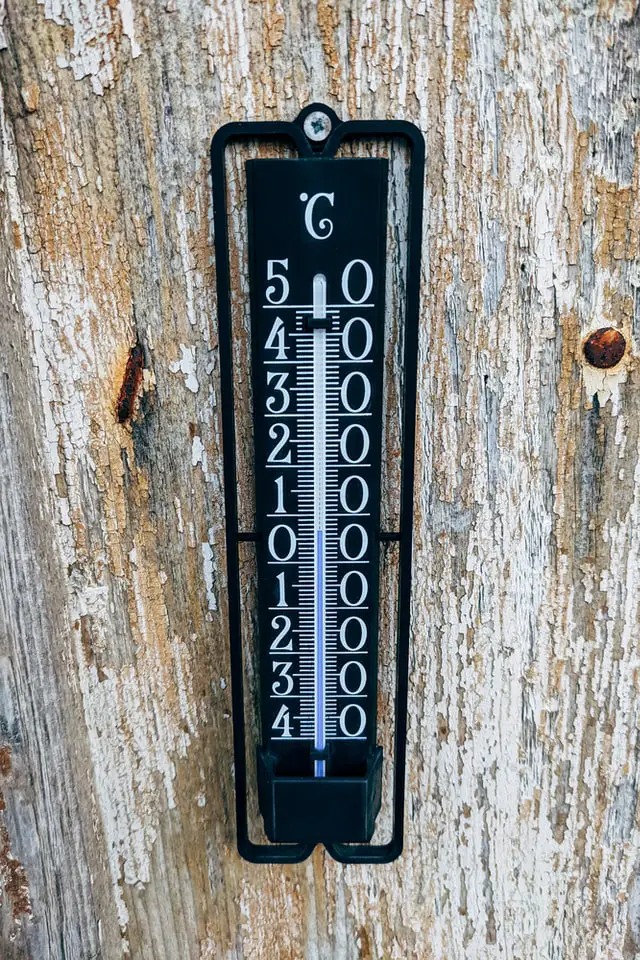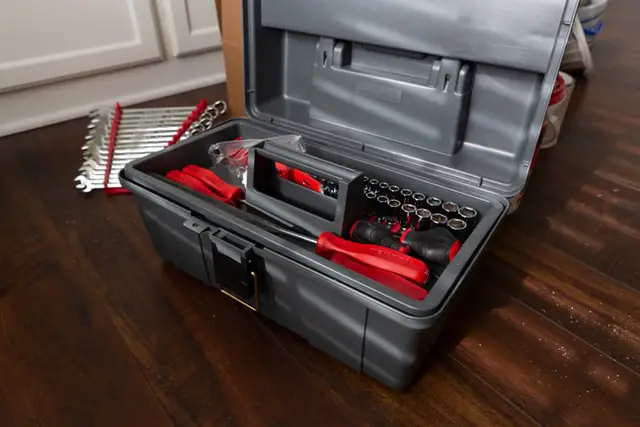
A question we are often asked here at Heat Pumps Scotland is what is the best heat pump thermostat settings to use for the Scottish climate?
What most people seem to try is randomly adjusting their thermostat in a process of trial and error until they happen upon the best setting for their home. The problem with doing this however is that you can waste a lot of time and energy searching for the right place on the dial. Also, unless you keep a close eye on the efficiency of your heat pump system whilst doing this, all you’re really doing is yo-yoing around some notion of your ideal temperature and probably ending up with a somewhat uncomfortable home environment with little or no gain in efficiency and cost.
Table of Contents
What is the most efficient setting for a heat pump?
What you should try to do when finding the best heat pump thermostat setting is to get the perfect balance between comfort and energy efficiency, which is different for everyone. A well-off person who likes a very warm home might favour a setting which keeps their home lovely and warm but is quite expensive to run. However, a more environmentally conscious person, or someone who is on a tight budget, might be willing to turn the thermostat right down in order to save the planet and or their wallet, especially if they don’t mind the cold, or perhaps even prefer their home to be on the cool side.
A good rule of thumb is to keep your heat pump thermostat set to between 20 and 25°C throughout the winter.
What temperature should I set my heat pump thermostat to?
Although in Scotland most people will use their heat pump for heating pretty much all the time, it is possible to use it for cooling your home during the summer. If you have a system that allows you to do this, you will need to adjust your thermostat to the optimal setting for winter or summer depending on the season.
Best temperature to set a heat pump to in winter

The best temperature to set your heat pump to in winter is around 20°C. Turning the temperature down a bit during the winter months can save you some decent money here in Scotland. The only exception to this would be if you have an auxiliary heat system that kicks in during very cold spells. If you have a backup gas boiler or oil fired boiler, which takes over when temperatures are at their coldest and when your heat pump would struggle, it might make perfect economic sense to keep the temperature setting for your heat pump higher and rely on this auxiliary heating system to fire up when needed.
One thing I would recommend though is turning the stat down while you sleep at night. The same could be true if you’re not actually in the home, for example during the hours you are out at work. There is little point hitting an entire house when you’re tucked up safe and cosy in your bedroom or else not even there at all.
Best temperature to set your heat pump during the summer

Let’s face it, in Scotland you’re very unlikely to need your heat pump to provide cooling, even during the hottest summer days. But if you have such a unit installed and find occasion to use it, it would be advisable not to set it any lower than 25°C.
Again, think about how you could make best use of the system, perhaps by turning it off at night and when you are out.
What can affect your heat pump setting?
Your home is likely to be fairly unique in terms of his heating and cooling characteristics. Even houses built right next door to each other can have quite stark differences in the level of insulation they have, how much ventilation is available, not to mention the preferences of the occupants.
For example, I know someone who lives at the top of the hill in a small village. They never had any problems with a lack of ventilation because the breeze at the top of the hill provides plenty of natural cooling. It also has the benefit of minimising the nuisance caused by those pesky Scottish midges!
Just a few hundred metres down the hill however, my other friend has a house which is quite sheltered and is very little breeze resulting in quite sticky hot temperatures in his home during very hot days. We also have a hard time of things on summer evenings when the midges come out and attack everyone who is in the garden, which has ruined a few good barbecues.
Outdoor temperature
If you can get away with setting your heat pump to a similar temperature to that outside, you’ll find it will run very efficiently and not consume a lot of energy. As temperatures plunge during the winter time, heat pump efficiency also goes down.
A large difference between the outside and inside temperatures will make your heat pump work harder and consume more electrical energy. This in turn will cost you more money, not to mention the fact it is bad for the environment.
Humidity level
In these mild Scottish climes, humidity can tend to creep up to uncomfortable levels. I found this to be particularly true in forested areas, where moisture from the evapotranspiration of trees is compounded by the shelter afforded from the breeze by woodland vegetation. This can make summer days where the Mercury hasn’t risen all that far feel sticky and oppressive.
Most people find that humidity levels between 30 and 60% feel comfortable. It’s best to keep your homes humidity levels somewhere in the middle of that range.
During the winter months, when condensation can become a problem indoors, it’s advisable to keep humidity levels towards the lower end of the range mentioned above. The dryer the atmosphere, the less chance of condensation.
If condensation is allowed to form through a combination of excessive humidity and humid air coming into contact with cold surfaces, this can become a real concern both for the integrity of your building and for the health of its occupants. Condensation can cause the buildup of mould, which poses a threat to human health.
One way to deal with this is to open the windows and allow the human air to escape, but heating your home with the windows open, even just on vent, will make your heating system much less efficient and expensive to run.
Sensible settings for your heat pump while you’re out
There is no need to have your heat pump working hard while you’re not in the building. So, best practice is to turn the temperature on the thermostat down during the wintertime if you’re not in.
Likewise, if you are using your heat pump for cooling, during the summer allow the thermostat to be notched up a little while you are not at home.
These practices will allow the heat pump to not work as hard when it doesn’t need to, which will save you money and energy.
Run your heat pump on a lower power setting overnight
When you go to sleep at night, it makes sense to turn the temperature down on your heat pump during the winter, say to 20°C. During the summer, if using it for cooling, allow the temperature to creep up a little, say to 25°C.
When you’re asleep, your metabolism slows down and your body naturally generates less heat. This means that you can get away with it being warmer during the summer without breaking into a sweat. And during the winter, even though your body is naturally generating less heat while you sleep, it’s likely you’ve got your thermals on and are wrapped up in a nice thick duvet.
So take advantage of these times when you don’t actually need your heat pump to be running flat-out, and let it take a break, conserving energy and costing you less.
How to maximise your heat pump’s efficiency
We’ve covered basic principles of how to make sure your heat pump is running as efficiently as possible. Let’s look at some specific steps that you can take to maximise that efficiency.
Regular heat pump maintenance

This is often overlooked by heat pump consumers, but it is incredibly important to keep your heat pump well-maintained. Even simply cleaning the important components regularly, such as the fan blades, can help to prevent the efficiency of your heat pump reducing over time. It can also have the added benefit of reducing the noise from the fan on your unit.
Other things that will be taken care of through proper maintenance include regassing the refrigerant so that it is always that the correct pressure and there is sufficient refrigerant in the system. Also, cleaning air filters regularly will obviously ease the flow of air through the unit, which for obvious reasons will help efficiency. Removal of a buildup of ice, which can often happen during the winter, will also improve the efficiency of an outdoor heat pump unit.
Improving Insulation and making sure your building is airtight

This is the elephant in the room and attention needs to be drawn to it. If your house is poorly insulated, you might find your heat pump struggling to keep your house warm. Likewise if you have cracks allowing drafts to blow through your house this will cause your heat pump difficulty in maintaining a comfortable temperature inside.
The only way to fix this is to retrofit proper Insulation, either rock wool, insulation board or whatever suits your circumstances. A tube of mastic can also work wonders for sealing up any cracks through which drafts are blowing, especially important in windy areas of Scotland such as on the coasts and particularly the islands.
Use of curtains
It can seem a little obvious and perhaps low-tech, but closing the curtains to prevent sunlight streaming in can really help to keep your house cool, particularly if the windows are south facing.
Likewise, curtains closed at night during the winter can help to minimise drafts and improve heat retention around windows in your home. I’ve also seen curtains drawn across front doors and even interior doors, which also seem remarkably effective in keeping drafts out and improving heat retention in homes.
Summary of best heat pump thermostat settings
So in summary, the best way to ensure your heat pump is running as efficiently as possible is to keep the temperature on your thermostat as close as possible to the temperature outside. This means your heat pump doesn’t have to work hard to maintain a large temperature difference.
Adding the useful tips provided above to ensure heat loss is minimised through the use of curtains, good Insulation and proper maintenance will ensure your heat pump operates as efficiently as possible for many years to come.
It’s all about finding the right balance for you – turning your heat pump down just a few degrees can make a huge difference to efficiency, which is great provided it doesn’t cause you too much discomfort. This decision is very personal and varies from household to household.
Whatever you do, though, make sure you get professional advice to ensure your heat pump system is appropriately designed and fitted so that it performs well for your particular preferences, type of home and how you live your life.